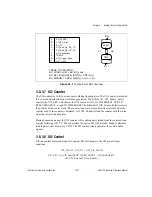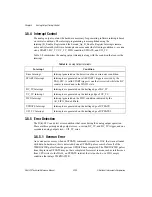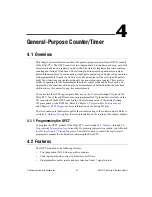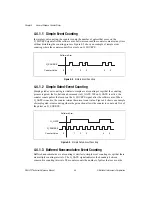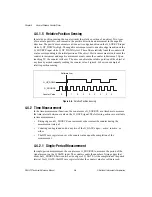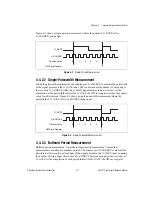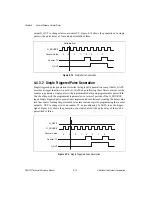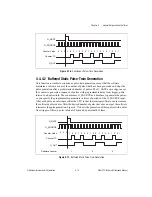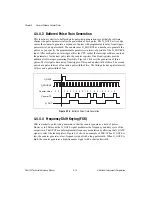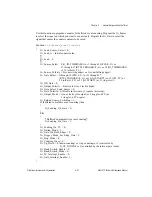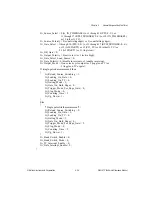
Chapter 4
General-Purpose Counter/Timer
©
National Instruments Corporation
4-11
DAQ-STC Technical Reference Manual
4.4.3.3 Retriggerable Single Pulse Generation
This function is similar to single triggered pulse generation except that the counter generates
a pulse on every active G_GATE edge following the software arm instead of only on the first
occurrence. After the counter arm, every active G_GATE edge causes the counter to generate
a single pulse with programmable delay and programmable pulsewidth. You should specify
the programmable parameters in terms of periods of the G_SOURCE input. Retriggerable
single pulse generation is implemented in software by loading the delay value into the
counter, loading the pulsewidth value into the primary load register, programming the counter
output G_OUT to change states on counter TC, and configuring the counter to trigger on
every G_GATE. Figure 4-14 shows the generation of two pulses with a pulse delay of five and
a pulsewidth of three.
Figure 4-14.
Retriggerable Single Pulse Generation
4.4.3.4 Buffered Retriggerable Single Pulse Generation
This function is similar to retriggerable single pulse generation except that the software
updates the pulse parameters after the generation of each pulse. Following the software arm,
every active G_GATE edge causes the counter to generate a single pulse with programmable
delay and programmable pulsewidth. You should specify the programmable parameters in
terms of periods of the G_SOURCE input. After each pulse, an interrupt notifies the CPU so
that the interrupt software can load the counter registers with the parameters for the next
pulse. Dual load registers provide additional software programming flexibility. Figure 4-15
shows the generation of two buffered pulses. The first pulse has a pulse delay of five and a
pulsewidth of three. The second pulse has a pulse delay of six and a pulsewidth of four.
G_SOURCE
G_GATE
G_OUT
Counter Value
Counter TC
1 0
2
3
4
4
4
0
4
1
0
2
1
0
4
4
3
4
2
1
2

